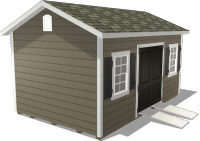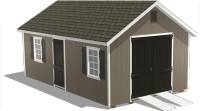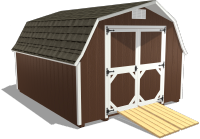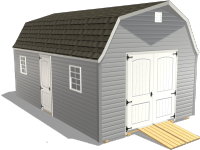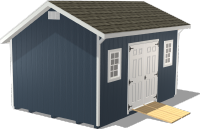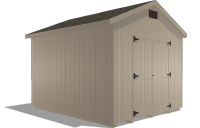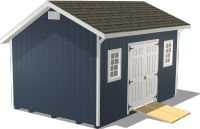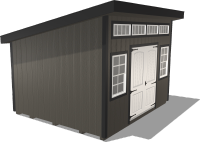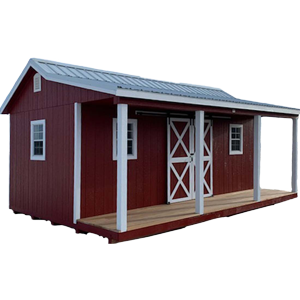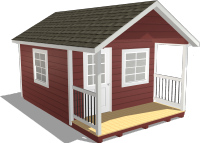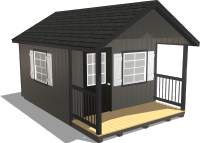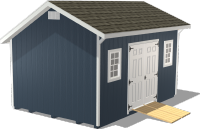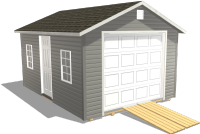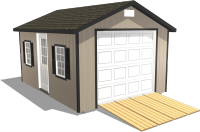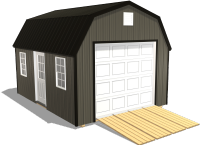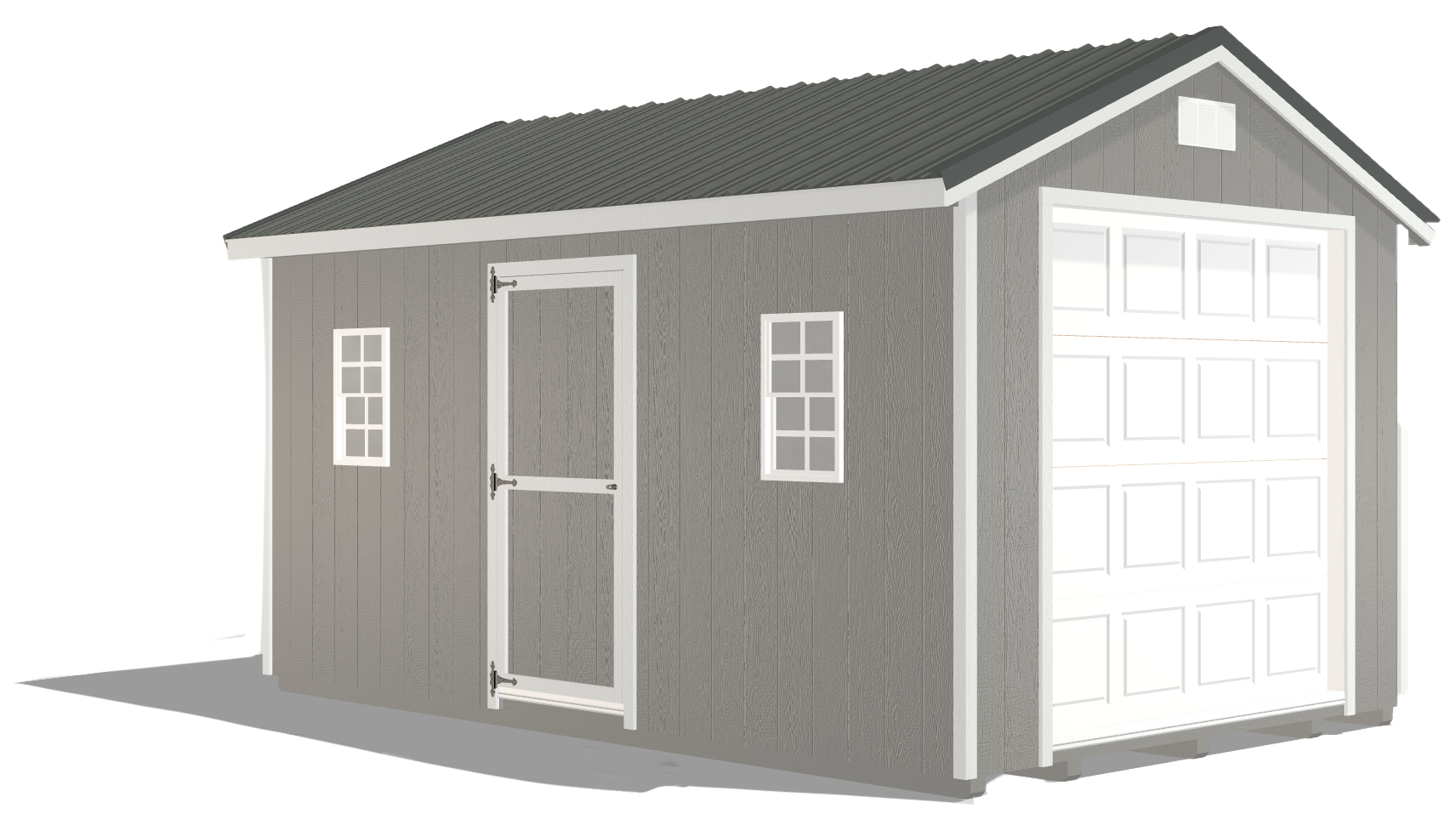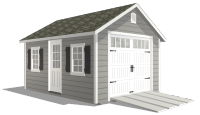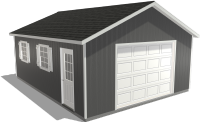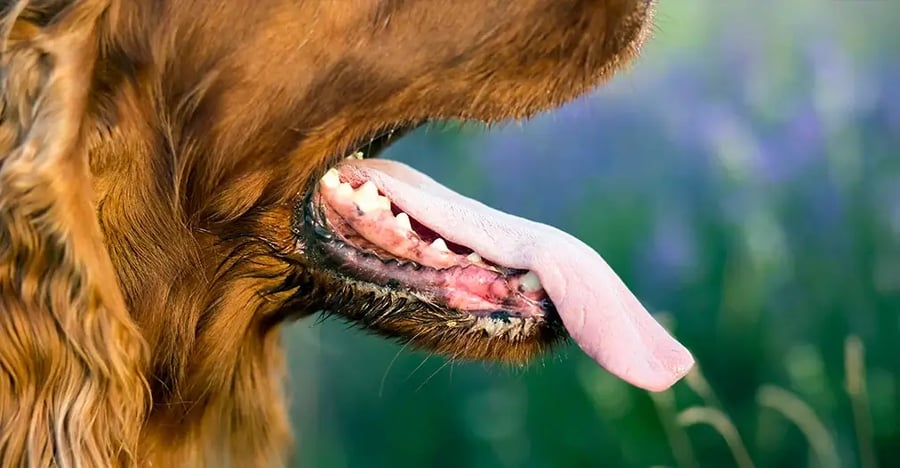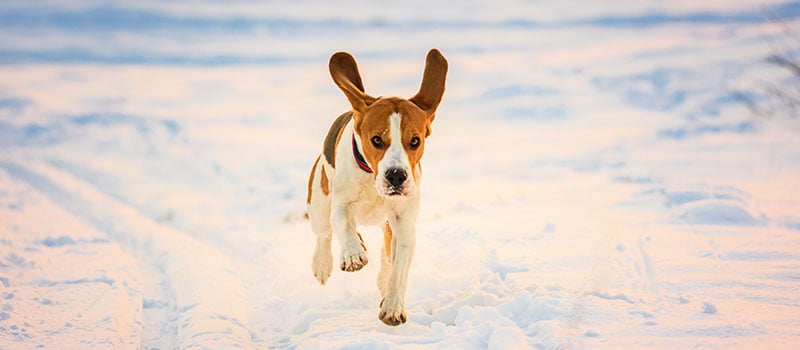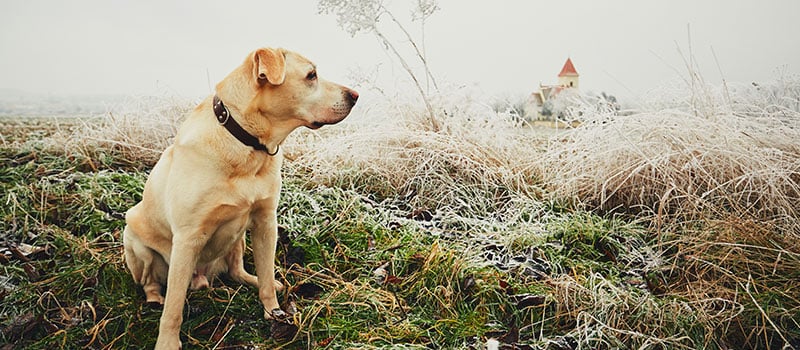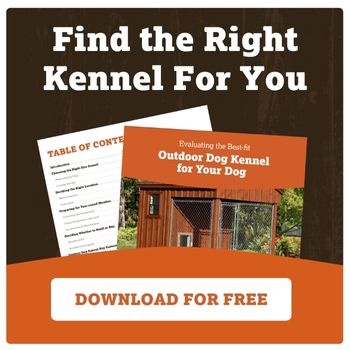How to Keep An Outdoor Dog Kennel Comfortable without Electricity
by Dakota Storage Buildings, on September 30, 2020
Tips every dog owner should know about preventing heat exhaustion and hypothermia.
Your hunting or farm dog is a special animal. He’s not only a trusty companion, but you’ve likely invested a good amount of time in training him and money in his care. For all of these reasons and more, protecting your dog from the elements is important to keep him happy and healthy.
If you use an outdoor dog kennel and have been wondering how to keep your dogs warm outside in the winter and cool in the summer, there are a few no-hassle, cost-effective measures you can take that don’t require electricity.
But before we get to that, let’s take a quick look at the dangers of extreme heat and cold and the optimal temperature range for your kennel.
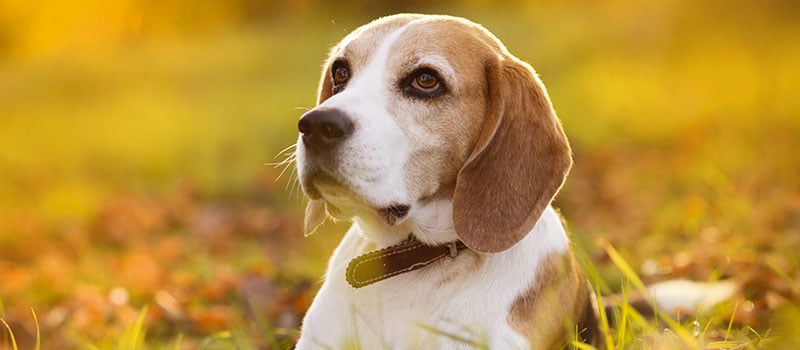
Avoiding Heat Exhaustion in Dogs
Heat exhaustion occurs when your dog’s body temperature rises too high, leaving them unable to regulate their body heat. Because dogs do not sweat, they are more sensitive to heat than we are. If their body temperature rises over 104 degrees, it can lead to heatstroke, which can potentially result in unconsciousness, organ failure, and even death.
How to keep dogs cool:
- Avoid leaving your dog inside a vehicle, even with the windows cracked. On a hot summer day, the temperature inside a truck that’s baking in the sun can reach a fatal range of 130 degrees in 30 minutes or less. Even on a mild day, 15-20 minutes in a parked vehicle can cause heatstroke in a dog.
- Avoid working your dog during peak temperature hours. If extreme heat is unavoidable, make sure he has plenty of water, and allow him to rest and cool down in a shady spot periodically.
- Make sure your house or outdoor dog kennel stays cool. Similar to a parked vehicle, interior temperatures can rise quickly in warm weather.
- Watch for heat exhaustion signs. You’ll want to take action immediately if your dog shows any of these symptoms: excessive panting or difficulty breathing, dehydration, excessive drooling, fever, lack of urine, rapid pulse, muscle tremors, lethargy, vomiting, diarrhea, dizziness, glazed eyes, unresponsiveness.
Cold Temperature Dangers for Dogs
On the other end of the spectrum, temperatures that are too cold can be just as dangerous for your furry friend. When temperatures fall below 45 degrees, some dogs may be uncomfortable — especially older dogs or those with short coats and thin bodies. At 32 degrees, we begin to reach the danger zone. And when temps drop below the 20-degree mark, dogs could potentially develop hypothermia and frostbite.
How to keep dogs warm outside:
- Consider your dog’s unique needs. Coat thickness, size, weight, age, and health all affect how cold-tolerant she might be. Also, consider the environment that your dog is accustomed to experiencing. If a dog that’s used to a warm, heated house is left out in the cold, she will chill faster than those exposed to colder weather.
- Assess the overall conditions. In addition to temperature, factors like wind chill, dampness, and cloud cover can impact how cold it feels. Whether your dog is active or at rest is also a factor. Dogs are most susceptible to chill when sleeping on cold winter nights.
- Monitor for warning signs. In cold weather, keep a closer eye on your dog. If you notice shivering, whining, lethargy, anxiety, or any other unusual behavior, it’s time to look for a way to warm the pup up.
Keeping Your Outdoor Dog Kennel Comfortable In Any Weather
Now that you know what to watch for, here are some practical tips for keeping outdoor dogs cool in the summer and warm in the winter.
- Invest in an insulated outdoor dog kennel. We all know people who go a little overboard in pampering their pets. No matter where you fall on this scale, it’s typically unnecessary to provide AC or heat to keep dogs comfortable — insulation will usually do just fine. Insulation works in winter and summer by slowing the movement of heat from a hot space to a cooler space. Floors, walls, and ceilings contribute a majority of air leakage to a structure while doors or windows can be trouble spots too. Ensuring that your outdoor dog kennel includes an insulated room and insulated fiberglass door can help keep the interior room comfortable for outside dogs year-round.
- Choose quality roofing and flooring. Another key to keeping the outdoor kennel comfy is using a roofing material designed to block radiant heat. You’ll also want to make sure your dog stays dry with a non-leaking roof and moisture-resistant flooring.
- Provide a run. It’s important to make sure your dog has access to fresh air and light at any temperature. A fenced-in run with easy-to-clean ply decking provides the perfect area for dogs to get sun and exercise while staying safe and sheltered.
- Extra comfort measures. There are plenty of other ways to regulate the environment in your outdoor dog kennel, without using electricity. For example, provide comfy beds, blankets, and hot water bottles as needed in the winter, and add a small doggie pool to the run to keep your pooch cool in the summer. Placing the kennel in the shade and avoiding facing the harsh north wind can help moderate temperatures too.
It's probably a good idea to install a wall thermometer in your kennel's interior so you can keep tabs on the conditions as needed. For the greatest comfort level, you're looking to maintain a temperature between 50 and 75 degrees.
How to Keep a Dog Cool in a Kennel
Maybe all your dog needs to stay cool is a pair of shades. It worked for Joe Cool, right?
Seriously though, we know you want to take good care of your dog, but you also want to be practical. As always, we're here to help. To learn more about choosing the best kennel for your dog's needs, check out our free guide, Evaluating the Best-fit Outdoor Dog Kennel for Your Dog, or peruse our online kennel selection today.



